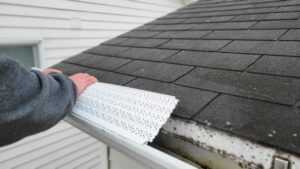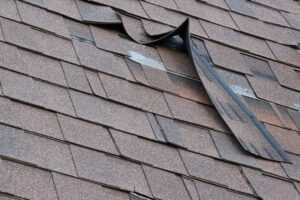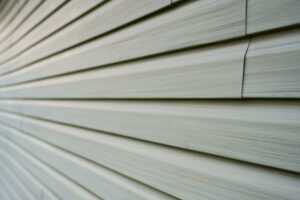In our modern world, energy efficiency has developed from being a mere idea to becoming an essential aspect of sustainable living. Homeowners today are increasingly conscious of their carbon footprint and the rising costs of energy, prompting them to explore how each component of their home contributes to energy efficiency. Among these components, the role of roofing is often underestimated yet incredibly significant.
At Smith Roofing & Exteriors, we recognize the crucial impact roofing has on a home’s energy consumption. Beyond merely providing shelter, an energy-efficient roof can reflect sunlight, reduce energy bills, and enhance overall comfort. We are committed to helping you navigate the complexities of roofing choices, ensuring that your home not only looks great but also performs optimally in terms of energy use. Let us guide you through the key aspects of roofing that contribute to a greener and more efficient home.
Understanding Energy Efficiency in Homes
Roofing is so much more than just a protective cover over your home. It also plays a main role in energy conservation. A well-chosen roof can significantly reduce your home’s energy costs by improving insulation and minimizing heat transfer. This not only saves money but also reduces your home’s carbon footprint.
A well-insulated roof can significantly reduce your home’s need for increased heating during the winter and cooling in the summer, thus decreasing energy consumption. Investing in a high-quality, energy-efficient roofing material or adding reflective coatings can further enhance this effect, contributing to a more sustainable and, overall, cost-effective household.
Roofing Materials Matter
The type of material used in roofing can significantly impact a home’s energy consumption, affecting both heating and cooling efficiency. Here’s how different materials stack up:
Metal Roofing
Known for its impressive durability and longevity, metal roofing is also highly reflective. These roofs can reflect solar radiant heat, which helps in reducing cooling costs by 10-25%. Additionally, metal roofs are 100% recyclable at the end of their life, making them an environmentally conscious option.
Asphalt Shingles
Some people might believe that asphalt shingles do not provide as much energy efficiency as other options. However, advancements in roofing technology have led to energy-efficient asphalt shingles with enhanced reflective coatings, improving their performance in reducing heat absorption.
The Importance of Roofing Insulation
Insulation is crucial in preventing heat transfer. A well-insulated roofing system keeps warm air inside during the winter and outside during the summer, leading to substantial energy savings. Types of insulation include:
- Spray Foam Insulation: Offers excellent coverage and is particularly effective in sealing gaps.
- Fiberglass Insulation: A common choice, providing a balance between cost and effectiveness.
- Reflective Insulation: Often used in attics, it reflects heat away from the home, keeping it cooler in summer.
Design Considerations for Energy-Efficient Roofing
Beyond materials and insulation, the design of your roof also plays a vital role in energy efficiency. Here are some key design considerations:
Roof Color
Lighter-colored roofs are a common choice for enhancing energy efficiency within a building. By reflecting more sunlight, these roofs reduce the amount of heat absorbed, thereby decreasing the need for air conditioning and lowering energy costs. This reflective capability also adds to a more comfortable indoor environment during hot weather.
Additionally, lighter roofs can mitigate urban heat island effects, promoting cooler neighborhoods. When getting a roof replacement or a new installation, choosing a lighter color can be a strategic decision for both energy savings and environmental impact.
Ventilation
Proper roof ventilation is important for maintaining a balanced indoor climate and extending the lifespan of the roof. Effective ventilation systems facilitate the movement of air, helping to regulate temperature and moisture levels within the attic space. This prevention of heat buildup minimizes the risk of issues like mold growth and wood rot.
Additionally, by preventing condensation, ventilation supports the structural integrity of the roof. In terms of efficiency, a well-ventilated roof can reduce energy costs by allowing for more efficient temperature control throughout the year.
Roof Slope
The slope of a roof plays a crucial role in determining its energy efficiency alongside its functional and aesthetic qualities. A steeper slope can improve water and snow runoff, which is essential for maintaining structural integrity and preventing damage that can compromise insulation and energy efficiency.
Moreover, the angle of the roof can influence the building’s ability to manage heat. In colder climates, a steeper slope may help reduce snow accumulation, thereby minimizing the risk of ice dams that can lead to heat loss. Conversely, in warmer climates, a roof with a moderate slope can provide better air circulation in the attic, helping to keep the building cooler and reducing the need for air conditioning.
When designing or renovating a roof, it is crucial to consider the slope that best suits the local climate, intended use, and energy efficiency goals to achieve optimal performance.
Benefits of Energy-Efficient Roofing
Investing in energy-efficient roofing comes with numerous benefits:
- Reduced Energy Bills: With improved insulation and reflective properties, energy-efficient homes significantly lower heating and cooling costs, allowing homeowners to save money on their energy bills over time.
- Increased Comfort: Energy-efficient homes provide more consistent indoor temperatures, which results in a more comfortable living environment regardless of the season, with fewer hot or cold spots.
- Environmental Impact: By reducing energy consumption, energy-efficient roofs contribute to a decrease in your carbon footprint, playing a part in the global effort to combat climate change and preserve natural resources.
- Enhanced Home Value: Energy-efficient homes are more appealing to potential buyers, often leading to higher sale prices and a faster selling process due to the long-term savings and benefits they offer.

Choosing the Right Roof for Your Home
Selecting the right roofing requires careful consideration of important factors, such as climate, budget, and aesthetic preferences. At Smith Roofing & Exteriors, our experts are ready to help you navigate these choices. We offer a range of energy-efficient roofing solutions tailored to meet your specific needs.
Explore Energy-Efficient Roofing Solutions in Fort Atkinson, WI
Roofing is not just about shelter; it’s a critical component of your home’s energy efficiency strategy. From materials and insulation to design and technology, the right roofing can lead to significant energy savings over time.
Whether you’re building a new home or upgrading your current roof, consider the energy efficiency implications of your decisions. Trust Smith Roofing & Exteriors to guide you in making the best choices for your home and the planet. Contact us today at (608) 473-3590 to get started.



